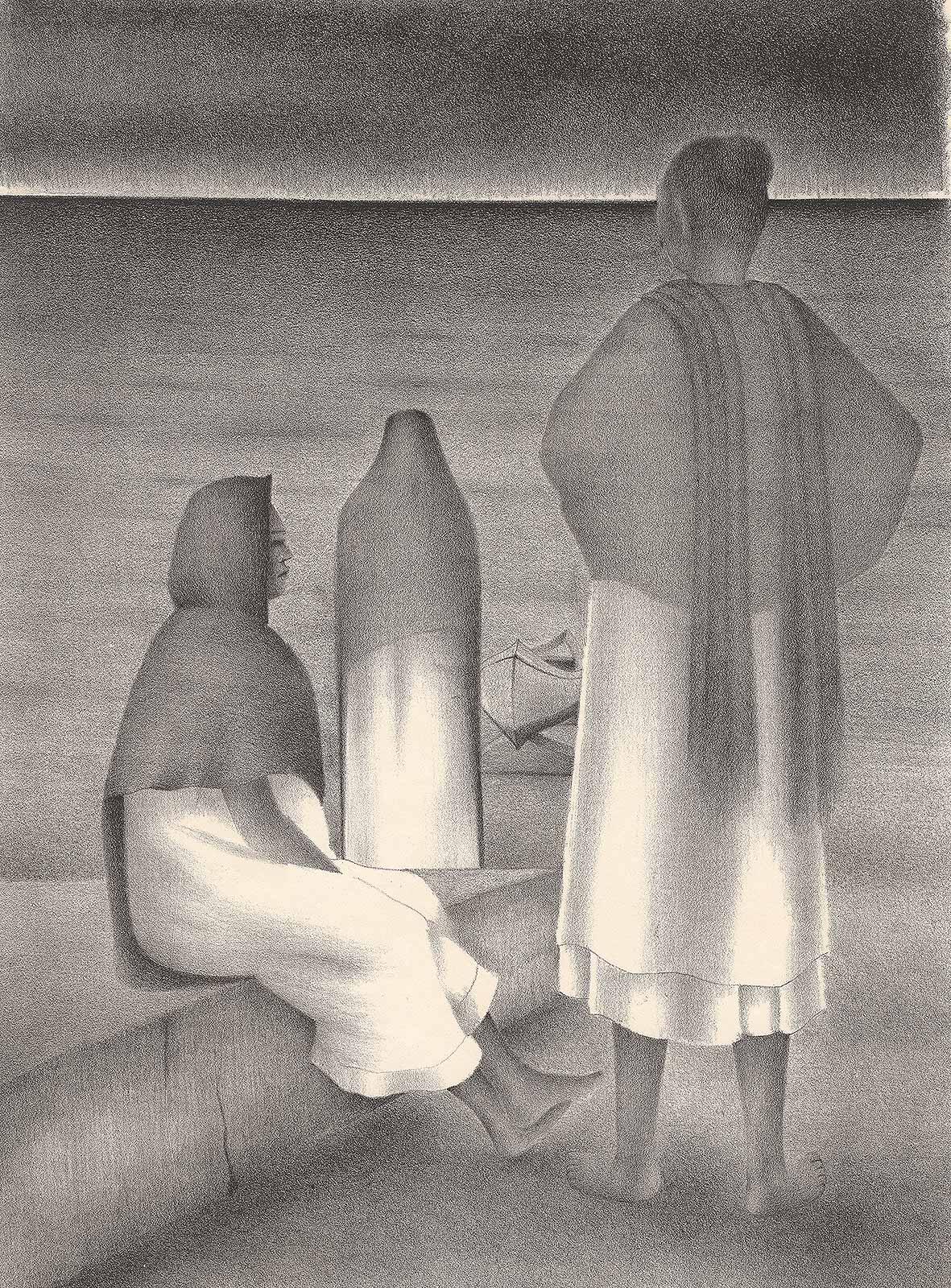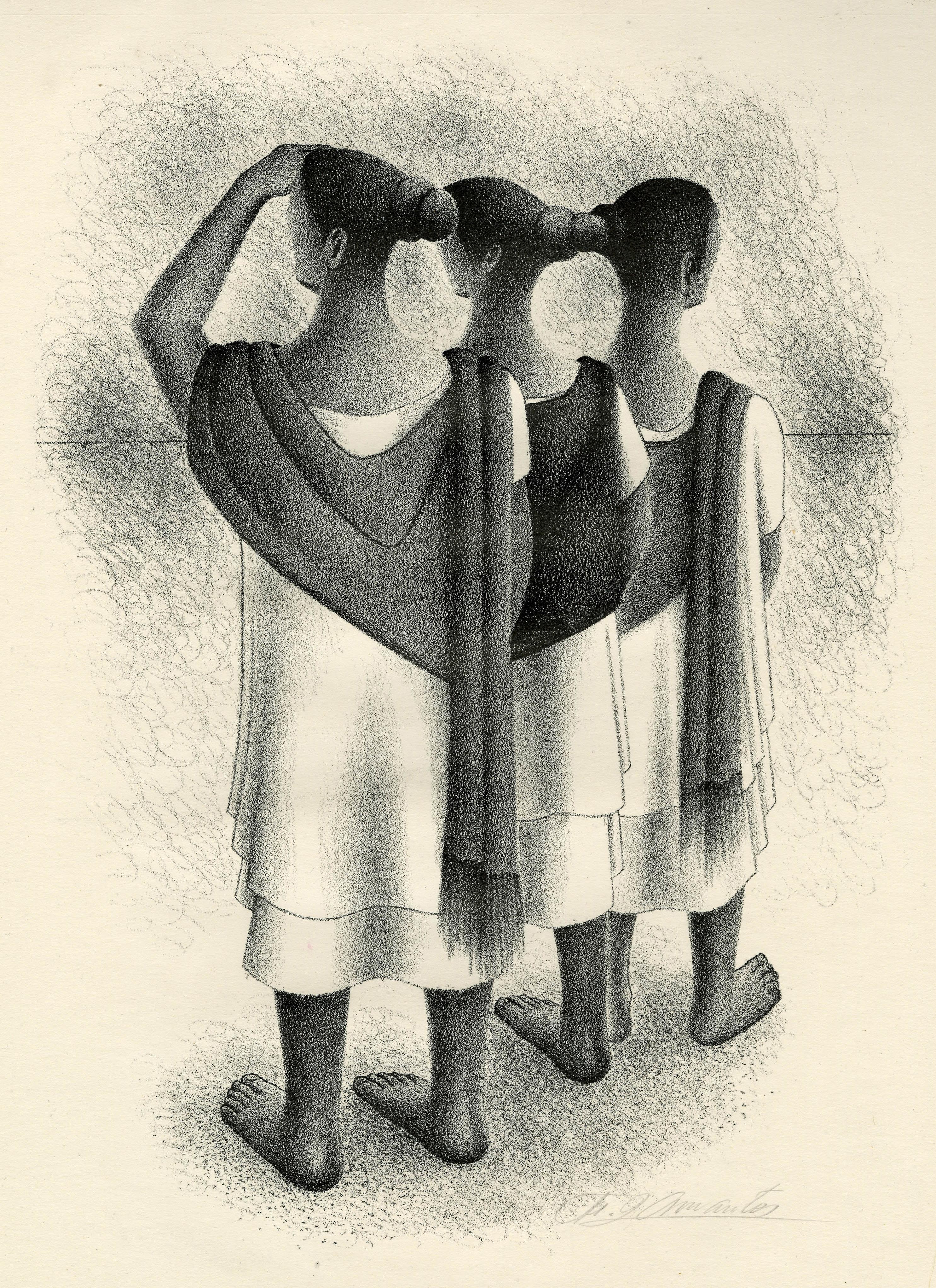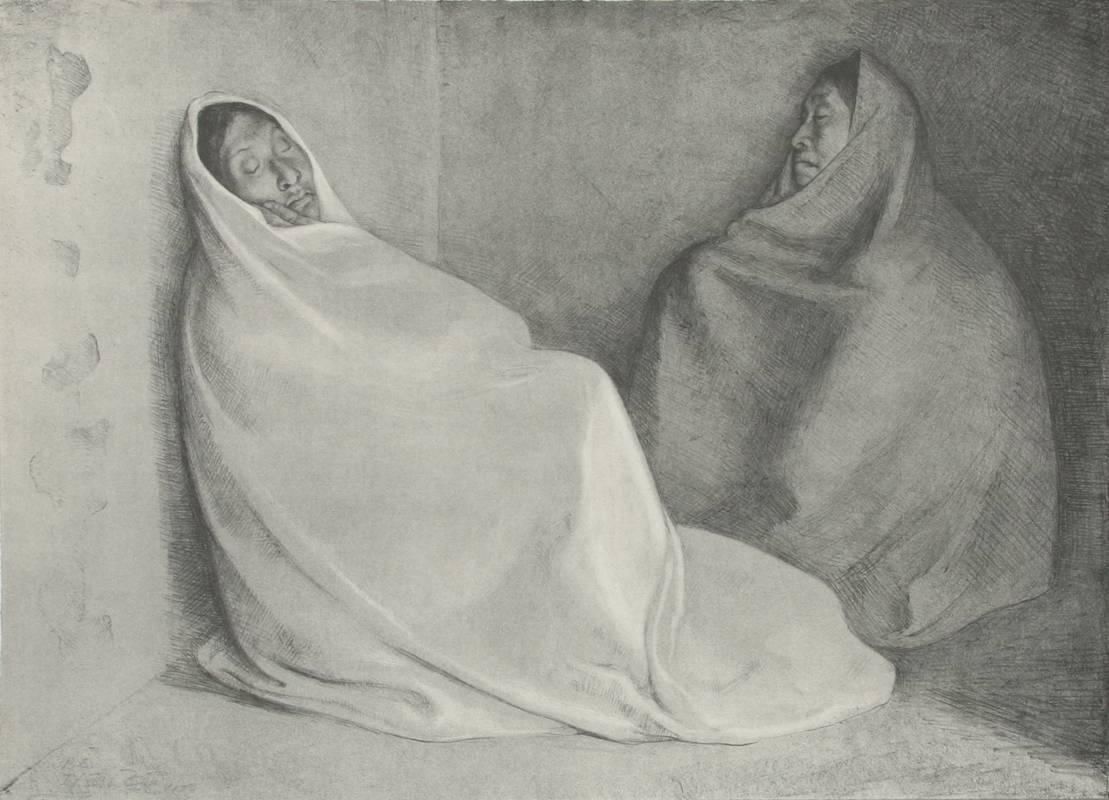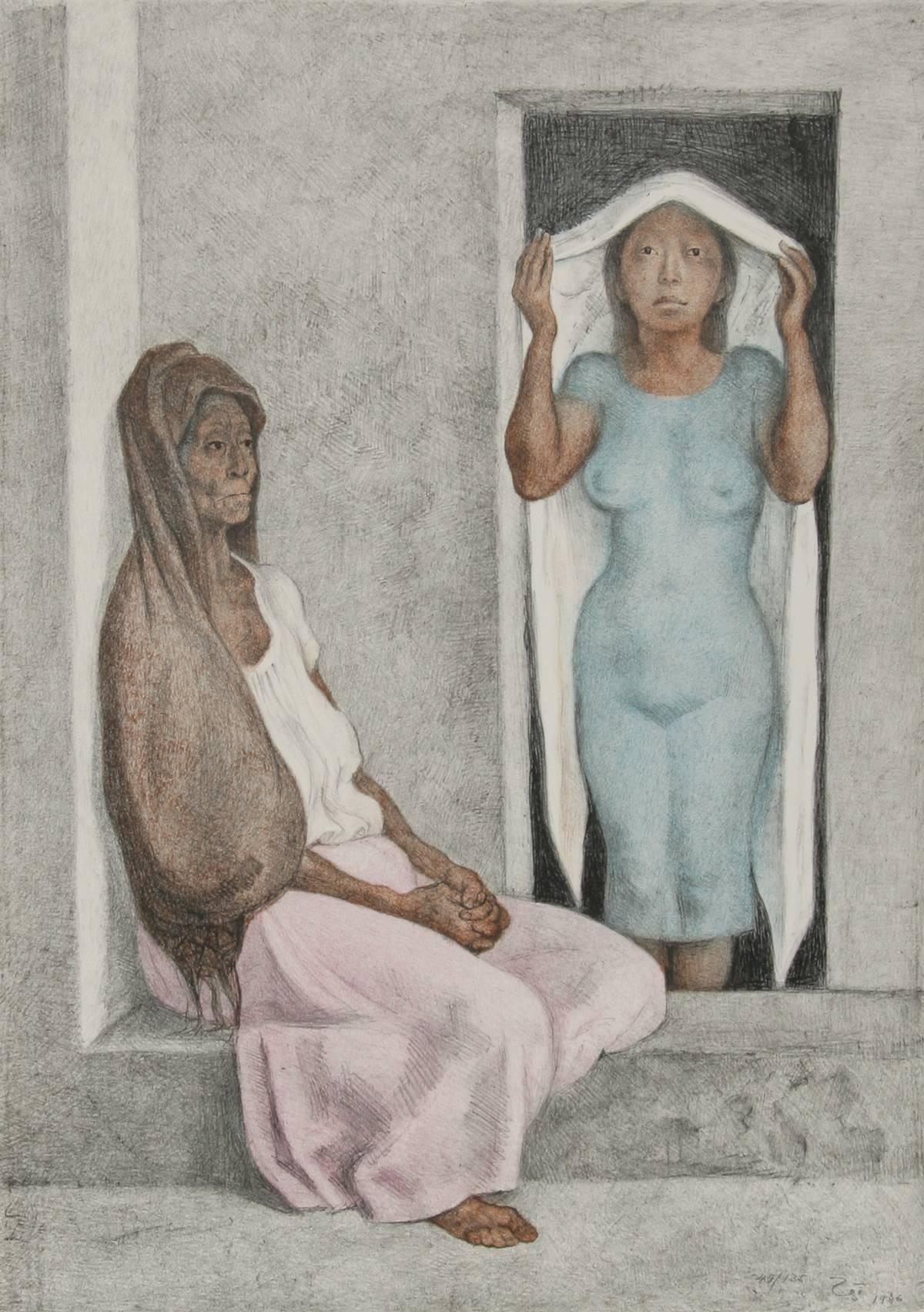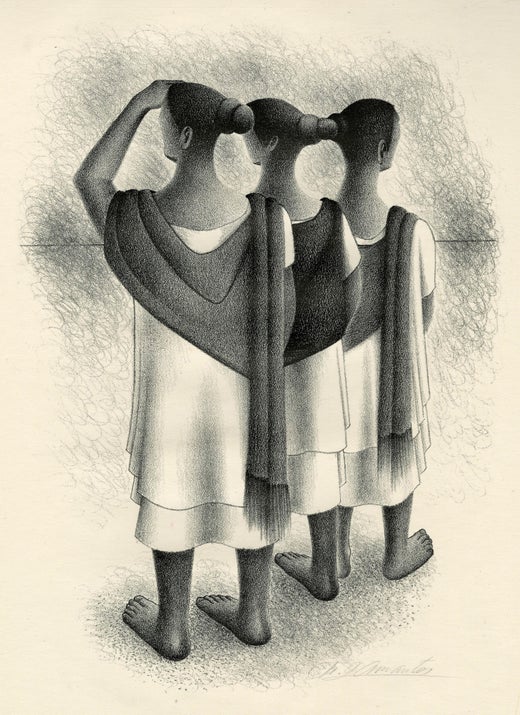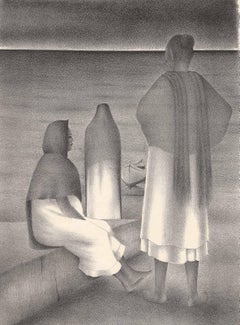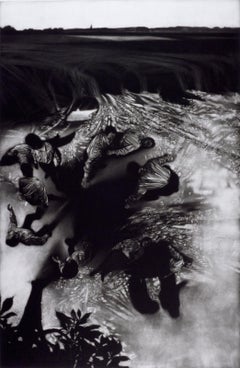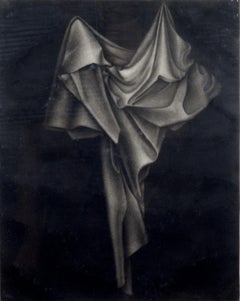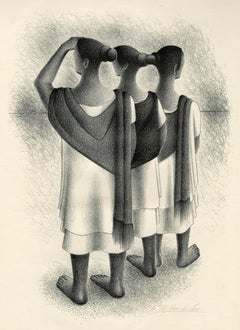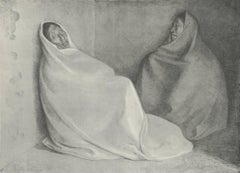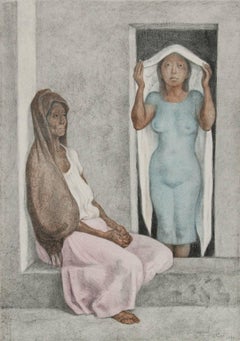Francisco DosamantesMujeres Veracruzans (three seated women from Vera Cruz Mexico in shawls)circa 1940
circa 1940
About the Item
- Creator:Francisco Dosamantes (1911 - 1986, Mexican)
- Creation Year:circa 1940
- Dimensions:Height: 18 in (45.72 cm)Width: 14 in (35.56 cm)
- Medium:
- Movement & Style:
- Period:
- Condition:
- Gallery Location:New Orleans, LA
- Reference Number:1stDibs: LU84132946293
Francisco Dosamantes
Francisco Dosamantes was born in Mexico City on October 4, 1911, son of artist and builder Daniel Dosamantes. Encouraged by his father and his uncle Juan he began studying art. The Mexican Revolution occurred while he was a young child and he stated that he remembered events such as soldiers on horses charging as well as the execution of rural farmworkers, events that would inform his work for the rest of his life. Dosamantes attended primary and high school in Mexico City but stated that his education was irregular and deficient. He then entered the Escuela Nacional de Artes Plásticas, where he studied for five years. After graduating, Dosamantes worked at various cultural missions from 1932–45, where he worked with the rural farm workers and became a champion of their causes. In Mexico City, he taught classes in high schools from 1937–41. In 1945, Dosamantes founded and directed the Taller Escuela de Dibujo y Pintura. He was a member of Liga de Escritores y Artistas Revolucionarios between 1934–38. Dosamantes was a member of the LEAR in the mid-1930s, before joining the TGP in 1937. Also before working with the TGP, Dosamantes studied at the Academia de San Carlos and, in 1928, was a part of the painters’ organization Treinta-treinta. In 1937, he was a founding member of the Taller de Gráfica Popular (TGP). In 1940, he became the secretary-general of the Sindicato de Maestros de Artes Plásticas. Dosamantes is primarily known as a printmaker but he also painted several murals in rural areas of Mexico between 1941–46, generally when he was there on cultural missions. As a book illustrator, he primarily worked for the Secretaría de Educación Pública working on books for literacy campaigns. Dosamantes died in Mexico City on July 18, 1986.
- ShippingRetrieving quote...Shipping from: New Orleans, LA
- Return Policy
More From This Seller
View AllMid-20th Century Modern Figurative Prints
Lithograph
1930s Modern Figurative Prints
Lithograph
Early 2000s Surrealist Landscape Prints
Mezzotint
1980s Contemporary Still-life Prints
Mezzotint
Late 20th Century Surrealist Figurative Prints
Mezzotint
Early 20th Century American Modern Portrait Prints
Mezzotint
You May Also Like
1950s American Modern Figurative Prints
Lithograph
1970s Expressionist Figurative Prints
Lithograph
1980s Expressionist Figurative Prints
Lithograph
Late 20th Century American Realist Nude Prints
Lithograph
1980s Expressionist Figurative Prints
Lithograph
Late 20th Century Realist Figurative Prints
Lithograph
